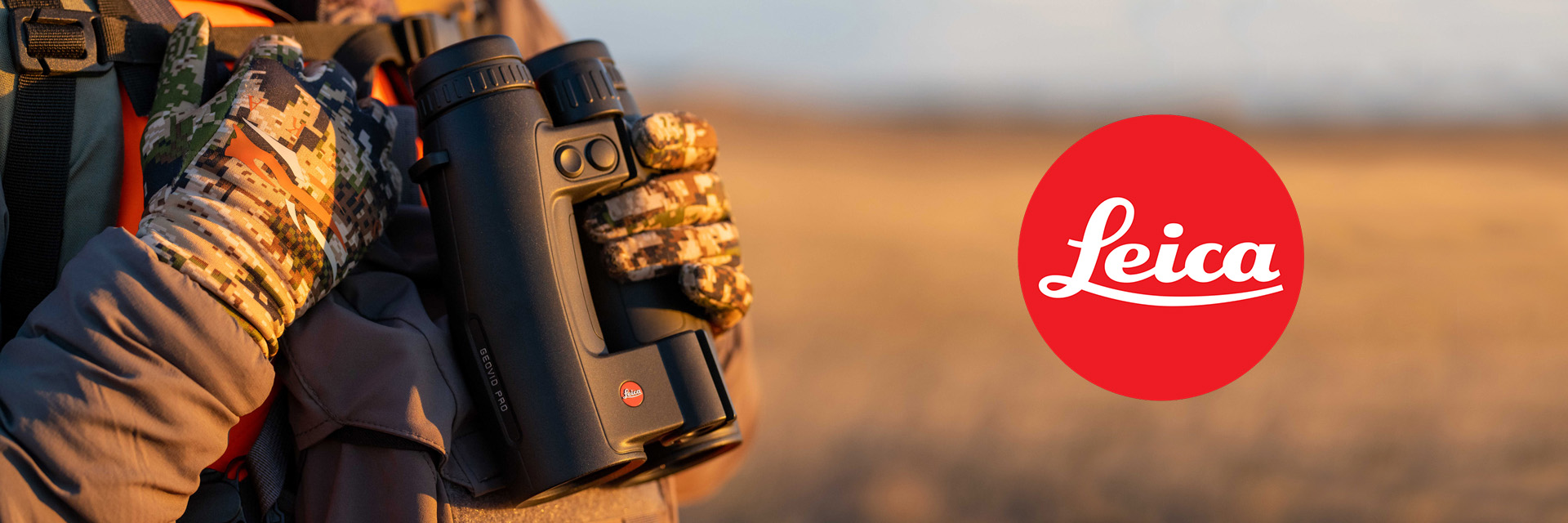Introduction
Welcome to our new segment called “Ask Us Anything”, which will take place every last Friday of the month. The viewers will be able to ask us questions, and we will answer them as accurately as possible. Let us begin with the first question.

Could you talk about Rusan and Optik Arms’ optics mounts, such as the company’s history, the product line’s quality, etc.?
Rusan is a company based in Croatia, which was established at the beginning of the 90s, after the dissolution of Yugoslavia. Željko Rusan is a gunsmith, who had a wish to produce his own hunting rifle. When he began producing mounts, he found out that mounts are far more profitable and easier to produce than firearms. His company grew fast, and now they have around 40 employees working in their company in Marija Bistrica.
10 years ago, Željko began producing night vision clip-on adapters for Dedal, which made his company flourish, as he is still the biggest producer of such adapters in the world. Rusan also produced the best copy of Ernst Apel pivot mounts. The latter introduced pivot mounts in the 70s and held their patent for about 30 years, but after the year 2000, other companies all around the words began producing the same pivot mounts. Rusan was among them, but it is important to know that their mounts are the only ones that look almost identical to the EAW ones.
Afterward, they also invented their own type. Now, they produce many mounts, as their biggest production numbers are in pivot mounts and adapters. They also produce steel rings for Weaver and Picatinny rails, side mounts for Swiss K31, many mounts for break-barrel rifles, adapters for red dot sights from Docter, etc. Their main feature is that they are all made of steel and their quality is extremely good, especially if we take price into account. They are one of the most affordable mounts, all made in the EU, but also of high quality.
With the flood of night vision riflescopes and thermal riflescopes, Rusan also produces products in this category. The company opened a shop in Zagreb, which is run by Željko’s daughter, and his son Ivan is slowly taking over the company itself. Rusan is also very adaptable, which is great, because we have so many different requirements for different mounts that are not actually in the catalogue, but they can make any sort of mount by demand.
Optik Arms is a much younger company from Bosnia and Herzegovina. The owner worked in Italy for quite a long time and now, they have an established production in Bosnia. Their mounts are also made from steel and have an excellent fit and finish, especially if you consider the price. Because they are a young company, their product line is currently not as big either. They produce rings for Weaver and Picatinny rails in different diameters. We have been working with them for two years now and in that time, they have released numerous mounts, always coming up with new ideas and solutions.
Rusan and Optik Arms mounts look similar, cost almost the same, and are both positioned much higher on the quality scale than China-made mounts. They are extremely durable and reliable, as they build products from steel. The minimum wage in Bosnia is still much lower than in other parts of Europe, so their mounts can be cheaper. If their mounts would be made in Austria or Germany, they would cost 2x the price.
What do you think is the best choice for thermal monoculars below the 1.600 € price range?
In this price range, we need to point out 3 devices. The first one, even though it is 90 € above this price range, is Pulsar’s Axion XM30S. The Guide IR510 n2 is also great, and we cannot forget about the HIK Micro Lynx. Pulsar’s device has good sensors, the lens diameter is 30 mm, whilst with Guide, it is 25 mm, and 19 mm with HIK Micro. Pulsar also gives the user the possibility of interchangeable batteries, which is a big plus, and their housing is made of magnesium, so it is very durable.
How good is Meopta Optika 6 3-18×56 FFP as a low-light stalking scope in comparison to the best ones on Meopta’s low-light offering (such as Meopta Meostar R2 2.5-15×56 PA)? What is the difference of extra 4% points in low-light transmission and other features, such as lens coatings, to the advantage of Meostar R2? Is Optika 6 3-18×56 still a good option in such conditions?
Optika 6 is a budget, entry-level tactical scope with a MIL/MIL configuration, FFP a reticle, tactical turrets, etc. It is not made for stalking, nor for low-light use. Why? First of all, 56 mm scopes are not made for stalking in general, as they are too big and long – they are made to be used at elevated heights. If you are stalking, it means you are on the move, so the exposed tactical turrets can easily pose a problem because they can move around, so the point of impact also shifts. All these problems are solved with Meostar R2, which is a hunting scope.
FFP tactical reticles are great for shooting on various distances, sports shooting, and tactical shooting, but not so great for hunting. With tactical scopes, the whole reticle is illuminated, which is problematic when hunting in low light, as you only need the central dot to be illuminated (slightly). Also, the Meostar R2 is designed specifically for low-light situations, which means that the adjustable illumination is very finely tunable for low light. Optika 6 is not meant for low light, so the illumination is not so finely tunable. Last but not least, Meostar R2 has a second focal plane reticle, which is a bit thicker and proves to work much better than a thin one in low-light situations.
The R2 model is also made in Europe and is of far better quality than Optika 6, which is made in Asia. What is the difference of extra 4% points in low-light transmission and other features, such as lens coatings, to the advantage of Meostar R2? There are people who say that the difference of low-light transmission rate that is smaller than 3% is impossible to see. But if you observe in complete darkness, you will see that the human eye can detect even the smallest of differences, so you will notice the 4% immediately.
It is also important to know that the information of light transmission rate is, with some manufacturers, not completely accurate (because a graph is converted into single-digit numbers and the process differs from manufacturer to manufacturer). Overall, if your intention is low-light stalking, Optika 6 3-18×56 is not a good option. Instead, buy a hunting scope with a thicker SFP reticle with a finely adjustable illumination of the central dot only and capped hunting turrets.
What is the best buy for an all-round hunting riflescope for around 1.000 €?
For an all-round hunting scope, the lens should be about 50 mm wide, and the magnification cannot be too high. The best buy would be the Steiner Ranger 4 2.5-10×50. If you go a bit lower in terms of price, then the Delta Optical Titanium HD 2.5-15×56 is also great.
Which is the best: Meprolight M5 or EOTech XPS3?
This is like comparing apples to oranges – both are extremely good, but not in the same way. Meprolight has advantages in one field, and EOTech in the other. If you are using a magnifier behind your red dot sight, then the EOTech is better, because it is a holographic sight. If, however, you are not using a magnifier, then the M5 (a reflex sight) might be a bit better because it has a larger window, and the definition of the dot is better. The build quality is great on both, perhaps EOTech might be more durable. But it all depends on how and why you are planning on using the optics.
I heard rumours that Zeiss is about to release a new series of riflescopes – is this something you have heard of?
So far, we have not heard of any novelties when it comes to Zeiss. Last year, in 2020, the V4 models had some upgrades, namely the 6-24×40 and 4-16×44 models have the new locking tactical turrets, and illumination has been added to those reticles. There have not been any mentions of new releases, but we think they should upgrade the Conquest V6 3-18×50 and 5-30×50 scopes with illuminated reticles.
Which are the best quick detachable mounts for a Sako 85 rifle?
There are quite a few quick detachable mounts for this rifle, but they come with many problems. On our webpage, under the category of mounts, there is also a link that will take you to our riflescope mounts buying guides. Overall, we think the best type of mounts are all pivot mounts (Ernst Apel, Rusan, Recknagel, Henneberger, MAK), but they are positioned really high. The biggest problem with mounts for Sako 85 is the type of setup. If you are using a heavy scope on a heavy calibre, issues can occur. The best option would probably be Dentler. A similar, but not as equally good option would be Contessa. You can also put a Picatinny rail on it, but you gain a bit more height, like with pivot mounts.
What is the most lightweight and reliable Blaser mount?
The one that stands out the most is definitely the mount from Osuma. With rail mounts, Osuma weighs only 84 g. The second one is the MAKuick mount, which weighs 125 g. The INNOmount weighs 127 g, Henneberger weighs 133 g and the original Blaser 135 g. That goes for the rail mounts, but we also put Osuma in first place in terms of ring mounts, as it weighs around 130 g and is probably the most lightweight. When it comes to reliability, Henneberger Samo or the original Blaser are great. MAKuick is also great, but it does not have the locking mechanism for the clamping system, neither does Osuma. In terms of reliability, the mounts from Blaser are very much alike, as all of them are great.
What are your thoughts on the Meopta R2 riflescope with a 4C reticle?
4C is probably the ideal hunting reticle. When the R2 scopes came out, the dot was a bit bigger than the one on the second generation of the reticle. With this reticle, you cannot go wrong, as it has a central dot, and only the central dot is illuminated, which is ideal for hunting, which we already mentioned in one of the previous answers.
Are there better value for money high-end low-light riflescopes than Leica Fortis 6 2.5-15×56
Price and performance-wise, they are one of the best. We cannot say they are the best, because we would do injustice to some others. But in this segment, from 2.000 €-2.500 €, our top two choices would be Swarovski Z6 and Leica Fortis 6. Swarovski has a higher number of illumination settings, while the Fortis 6 might optically be a bit better and is about 10% cheaper. However, both are great.
Is it possible to attach Pulsar Krypton FXJ 50 to a Zeiss Victory V8 1.1-8×30 scope?
Yes, you can. You will need an adapter from Rusan or SmartClip. SmartClip might even be a better solution in this case, as it was made specifically for this scope. Zeiss Victory V8 1.1-8×30 can be used with or without a rail, and SmartClip has a tailored solution for it. When using this setup on your scope, you should put the magnification of your scope to 3x or 4x, and it will work perfectly.




